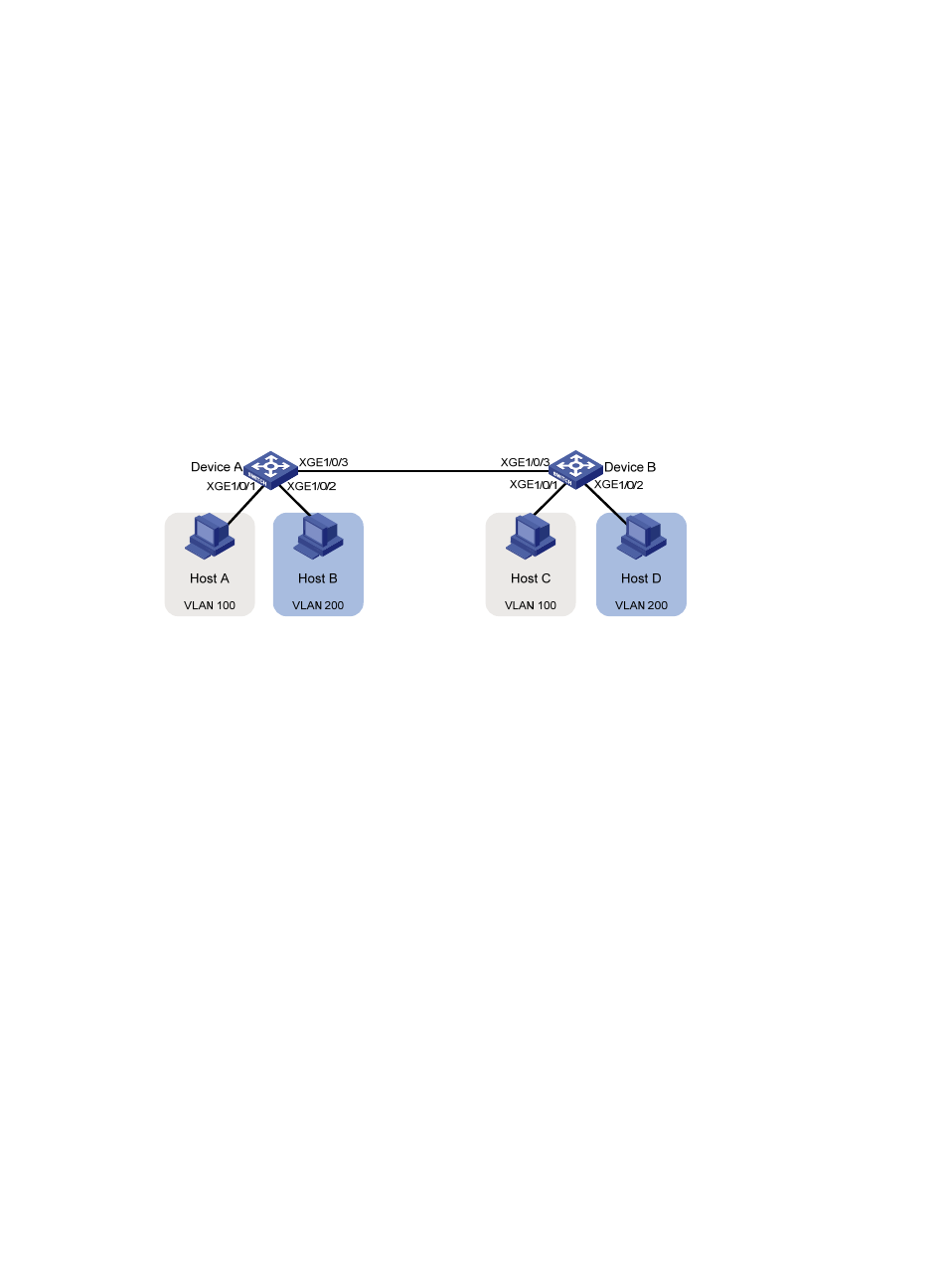Port-based vlan configuration example, Network requirements, Configuration procedure – H3C Technologies H3C S12500-X Series Switches User Manual
Page 128

117
Port-based VLAN configuration example
Network requirements
As shown in
, Host A and Host C belong to Department A, and access the enterprise network
through different devices. Host B and Host D belong to Department B. They also access the enterprise
network through different devices.
To ensure communication security and avoid broadcast storms, VLANs are configured in the enterprise
network to isolate Layer 2 packets of different departments. VLAN 100 is assigned to Department A, and
VLAN 200 is assigned to Department B.
Make sure hosts within the same VLAN can communicate with each other: Host A can communicate with
Host C, and Host B can communicate with Host D.
Figure 32 Network diagram
Configuration procedure
1.
Configure Device A:
# Create VLAN 100, and assign port Ten-GigabitEthernet 1/0/1 to VLAN 100.
[DeviceA] vlan 100
[DeviceA-vlan100] port ten-gigabitethernet 1/0/1
[DeviceA-vlan100] quit
# Create VLAN 200, and assign port Ten-GigabitEthernet 1/0/2 to VLAN 200.
[DeviceA] vlan 200
[DeviceA-vlan200] port ten-gigabitethernet 1/0/2
[DeviceA-vlan200] quit
# Configure port Ten-GigabitEthernet 1/0/3 as a trunk port, and assign it to VLANs 100 and 200,
enabling Ten-GigabitEthernet 1/0/3 to forward packets of VLANs 100 and 200 to Device B.
[DeviceA] interface ten-gigabitethernet 1/0/3
[DeviceA-Ten-GigabitEthernet1/0/3] port link-type trunk
[DeviceA-Ten-GigabitEthernet1/0/3] port trunk permit vlan 100 200
Please wait... Done.
2.
Configure Device B in the same way Device A is configured.
3.
Configure hosts:
{
Configure Host A and Host C to be on the same IP subnet. For example, 192.168.100.0/24.
